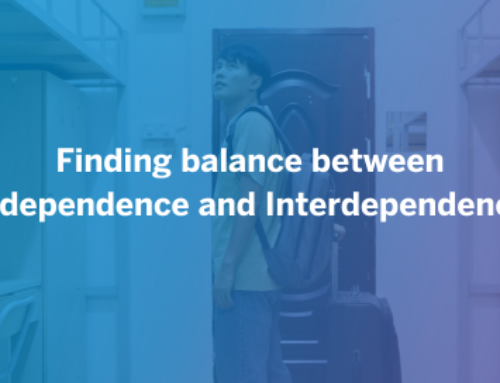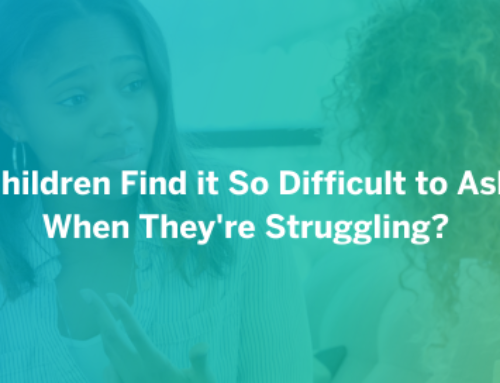
We hear it all the time. Parents tell us, “This addiction and mental health material is extremely important to know as a community member and parent. We are all grateful for the prevention effort. It will help identify people in my family or community who may be struggling. But of course, I’m not worried about my son. He has his head on straight.” How could their child ever really be a member of the wrong crowd? He was raised in a strict household. He knows the deal. That kind of behavior doesn’t fly around there. He’s enrolled in AP classes and involved in sports. If he tried anything, he would tell them. They have an open-door policy around their house.
Their child is not prone to the vulnerability that seems to apply to the conservatively reported 40% of high school seniors who report having vaped in their lifetime (‘conservatively reported’ because as a high school drug user, I routinely reported on forms and surveys that I was 100% sober). Within these ~40%, there are thousands of AP-level students from strict households with open-door policies whose parents couldn’t possibly imagine them being addicted to drugs. However, the parents of the ‘invincible’ child still believe their child to be in a completely different category. Often, there is no statistic or lesson that can sway this steadfast attitude. Adults have listened to my presentation and explained to us that it happened in my household because it was unlike their household, in which rules were maintained and standards were kept at all costs.
This very lack of awareness regarding one’s own vulnerability led my parents to overlook my addiction for years. They could never see me for who I had become. Even when they began to admit that I may be engaging in dangerous or risky behavior, it always seemed to them that these were my friends’ behaviors. My parents were not lazy and uninvolved. They were caring, affectionate, strict, and highly engaged. Yet, they would probably have felt that it would be a slight waste of time to be on the receiving end of a prevention message. That just wasn’t the kind of household we had. There was no room for drug use there.
These painful truths are crucial for all the parents of invincible children. Volunteering, participating, and working in treatment, I have witnessed hundreds of parents in their first family sessions with their children in rehab. Most of the parents are in shock. They never saw it coming. Not in the slightest. Their child was enrolled in college, working full time, in a long-term relationship, on his way to a good school, and yet, as it turns out, they were driving under the influence, using drugs constantly, stealing, and lying. The truth begins to reveal a child that the parents don’t even recognize. It can be absolutely horrifying to discover the degenerate dialogue of the secretive addict who seemed so healthy and driven.
We do not encourage paranoid parenting, distrust, and extreme strictness at LSIS. Rather, we repeat to parents and educators as often as we can that the prevention effort is necessary for every single child. If a child is mostly well-behaved, honest, and obedient, but we don’t effectively inform them about the process of addiction that will soon surround them, that information will come from somebody, from somewhere else. If there is no dialogue in your household about drugs that promotes the child’s honest input, they will have that dialogue with someone else. With national surveys indicating that students’ perception of the risk of substance abuse is plummeting, it must be recognized that students today are vulnerable. They are vulnerable to misinformation, intense experiences with peer pressure, and shifting perceptions of risk.
Notably, research has reliably shown that an individual’s perception of their own invincibility is one of the strongest predictors of delinquent behaviors, addictive behaviors, and the initiation of substance abuse. An individual’s inability to recognize their own vulnerability can contribute to incredible delusions to help sustain their behavior patterns. It can slowly lead them to believe that the risks that others around them incur do not apply to them. They are in a different class. There is no sense of impending danger when behaviors escalate, when the individual loses control, or when the thought arises that they may not be able to stop. Each behavior and warning sign is rationalized in accordance with the individual’s belief that the risks will not and cannot hurt them.
Without intentional efforts to educate and protect our children, we educators, parents, and clinicians can play a role in emboldening the child’s sense of invulnerability. If a parent thinks that their family is above and beyond the risks posed to very large groups of our student population, we don’t need to look far for the person who modeled this irresponsible attitude for the child. If parents are themselves engaging in behaviors whose risks they clearly undermine, we need not look far for the individual who taught their child this sense of dissonance and self-deception. Children are extremely receptive to our attitudes, communication style, and behaviors. Taking the time to model an understanding of vulnerability, to discuss the decisions that will stand before the child, to be intentional in learning about the current risks in their life, shows them the necessary steps to be safe in their own world.
When we overlook risks in their environment, we encourage them to do the same. The attitude that LSIS promotes is an honest and open relationship with the children we educate. We find it effective and beneficial to discuss children’s vulnerability, susceptibility, and resilience without paranoia or fear. Doing this may be uncomfortable for many parents. Many would like to think that they are good enough parents to have avoided the issue. We respond that they don’t quite know what they are up against. In practice, this attitude suggests discussing with children the challenges they will face with each milestone, change, rite of passage, and social environment they encounter. It suggests a willingness to look for signs of early detection in the child we love so much and want the best for. Mostly, it involves engaged and difficult discussion with our youth. When this is all combined, we believe we can help. We know the impact of helping even just one child.
By: Danny Z
Danny is a in house LSIS Prevention Speaker.








Leave A Comment